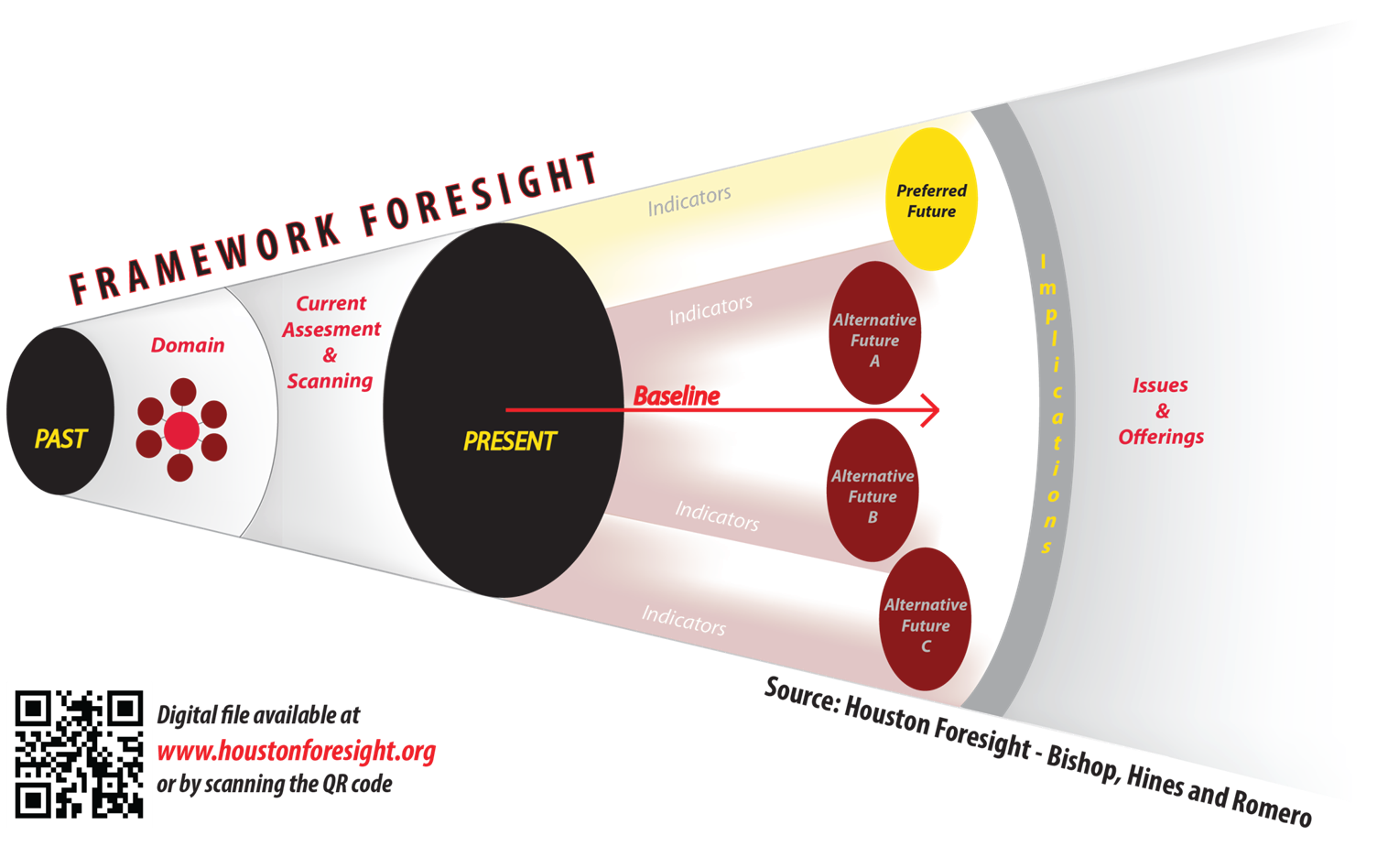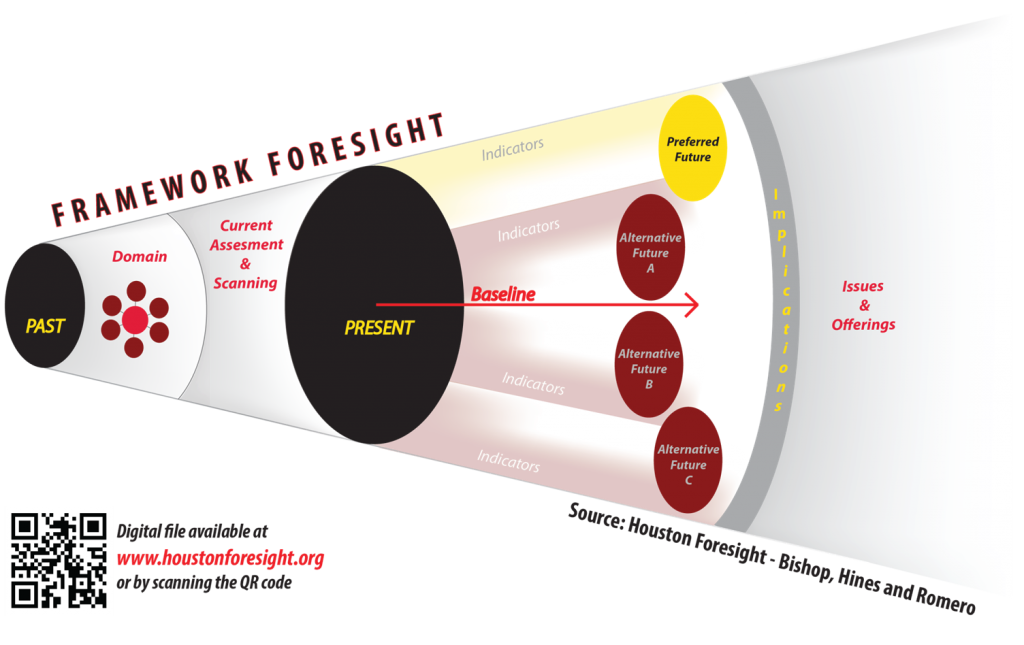It’s been great to have a little design help in order to better communicate what we do at the Houston Foresight program. We published our Framework Foresight method in Futures back in 2013 and had been teaching it for several years before. A key change in our approach was the evolution from the original “Framework Forecasting” created by Peter Bishop to “Framework Foresight” in which we more explicitly and expansively include “influencing the future.” In particular, we developed a revised approach to Implications Analysis and added in pieces on Issue and Opportunity Identification, and Strategic Responses. We also salted in elements from visioning and strategic planning.
Our goal was to expand the method to provide basic guidance “all the way through” foresight project, and well as suggestions for different ways that each of the activities could be carried out. We have played with various ways to visually represent the process, and finally found what I think is a neat visual developed by our Spring GA Maria Romero.
A quick summary of the flow: We frame the project by mapping the domain (topic). We explore its history and do a current assessment, while kicking off scanning for the signals of change. We develop a baseline future that assumes present trends will continue and present plans and projections will materialize. Recognizing that that rarely happens, we develop several alternative futures, including a preferred future for the client where applicable. Then we identify the implications of the futures for the client, which provide insight into strategic issues, new offerings, or new designs policies, etc. We finish up by identifying the indicators to track for the alternative futures. — Andy Hines


This is so groovy and a great visual so close on the heels of the Spring Certificate in Foresight course.
Hi Andy,
Very cool!
JV